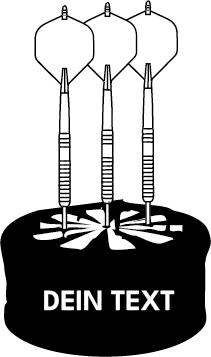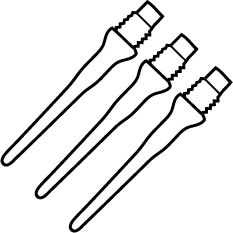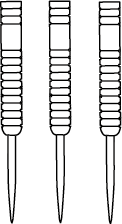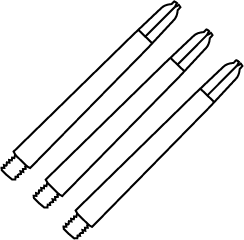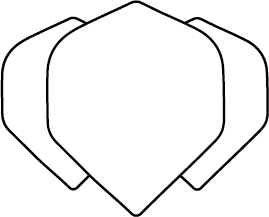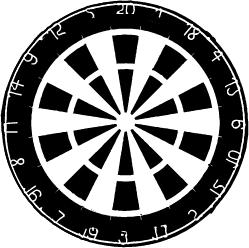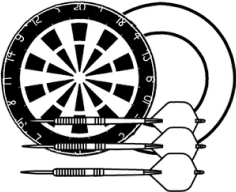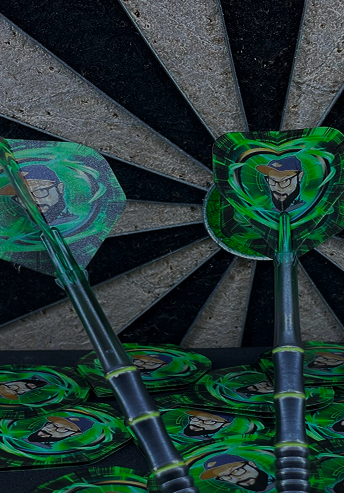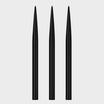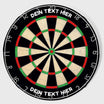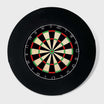There are many dart games. One of the most popular training games is undoubtedly Shanghai. Experienced players will immediately sit up and take notice. Many players associate the word "Shanghai" with a very specific high finish in darts – the 120 .
We'd like to explore why this is the case in more detail in this blog post. Here you'll learn everything about the Shanghai darts game: variations, rules, naming , and the meaning behind this training game .
It's striking that there are different rules for Shanghai Darts in many places . So, which rules are the correct and original ones? We'll explain and hope we can inspire you to play Shanghai Darts, too.
The naming of the Dart Shanghai
The Dart Shanghai rules are clearly based on the standard Shanghai finish in darts. The Shanghai finish is always referred to on television when a player checks out 120 with three darts .
The way to do this is as follows: T20, 20, D20 or 20, T20, D20 .
In this case, the player hits every field in the 20-segment with three arrows and thereby wins a leg – and also plays a high finish.
In electronic darts, many machines have a built-in game called Shanghai. Therefore, the term "Shanghai Finish" at 120 points remaining is more likely derived from the previous game in electronic darts, rather than the other way around.

The dart game Shanghai – the rules
First things first: there's no limit on the number of participants in Shanghai Darts. This means the game can be played with 2, 5, or even 10 players . Compared to other games, the Shanghai Darts rules are actually relatively easy to explain. For beginners, we'll start with the regular version.
The standard version of Shanghai Darts involves determining who goes first with the bullseye before the game begins. Players then take turns throwing. The goal is to hit as many spaces in a numbered segment as possible. The first player throws at the 1, the triple 1, and the double 1—at least, that's the goal .
- For a hit in the single field there is one point
- Two points for a hit in the double field
- And three points for the triple .
The game typically lasts seven rounds . For beginners, it's recommended to start by playing from 1 to 7. We'll cover the other variations a little later in this blog post.
Whoever hits all the fields in the segment wins the game
At the end of the game, the person who has collected the most points wins.
But beware: a rake has this variation. If a player actually manages to hit all the fields in a number segment with three arrows, they automatically win the game. The game is essentially over immediately, and the number of points previously collected no longer matters.
So it makes less sense to constantly aim for triples just to score points. The goal should be to win the match with just three perfect darts, regardless of what you've thrown before.
Even if you are in last place after six rounds, you can still win the game by hitting the 7, D7 and T7 .
In the easy version, the order in which you hit the squares doesn't matter at first. For more advanced players, the next version might be more suitable.
Another variation of the dart game Shanghai
In the second variant, the wheat is clearly separated from the chaff. The number of rounds to be played remains the same for the time being (seven). This time, the goal isn't to hit the fields of a segment with three arrows.
In this variation of Dart Shanghai , you start at number 1. If you hit it, the second dart moves on to number 2. Hitting the entire segment moves you one number further .
So in seven rounds you have 21 arrows and can even reach the bull in total – provided you hit the segment with each arrow.
While this may seem utopian for beginners, it's already a great training game for more experienced players. Here, too, you're awarded points depending on which field you hit in the segment. Similar to the first variant, you collect points to ultimately win the game.

But even here, the match can end in the first round. The following is required: the Shanghai Finish involves hitting all the squares in a segment with three arrows. In this special variant, however, you must hit the single, double, and triple squares in three different segments to win the match.
This means that you can, for example, play the single one, the double two, and the triple three and win the game. What sounds so simple will prove to be extremely difficult in practice.
Another variation of the Shanghai Dart rules for ambitious and experienced players
For true pros, there's another mode. Here, you play 20 rounds . In these 20 rounds, you have three darts for each segment and, just like in the two previous versions of Shanghai Darts, you collect points.
The winner is the player with the most points at the end. Everything is similar to the first variant. However, deciding the game early is only possible if a player manages to play a Shanghai Finish.
This means that he has to hit all three fields in a segment – but the double field last.
A Shanghai finish in darts is not just the 120
The three variations demonstrate that Shanghai Darts is tremendously fun and can also be a good practice game in a larger group. Furthermore, it can be deduced that a Shanghai finish is not just a 120 , but any finish in which all three fields in a number segment are hit.
For example, the 114 , which can be played over T19, 19, D19, would also be a so-called Shanghai finish. However, in darts, it has become common practice to only call the 120 this, as it is the only common way to describe a finish in which all three fields in one segment must be hit .
What this means is that the 114 is usually played over T20, 14, D20 and not over the 19.

Ready to take your skills to the next level? Discover our exclusive secrets and proven methods to optimize your game:
-
JDC Challenge » We'll give you valuable tips, techniques, and strategies to take your game to the next level! Click here to learn more
- The art of tournament planning: Learn how to set up professional dart tournaments in our guide.
- The 121 darts game is not only the perfect doubles practice, but it also allows you to get to know all the other fields on the dartboard better.
Sofern nicht anders angegeben, unterliegt das im Beitrag gezeigte Bildmaterial mit Bezug zu Dartspielern und verwandten Themen dem Copyright der Professional Darts Corporation (© PDC).

